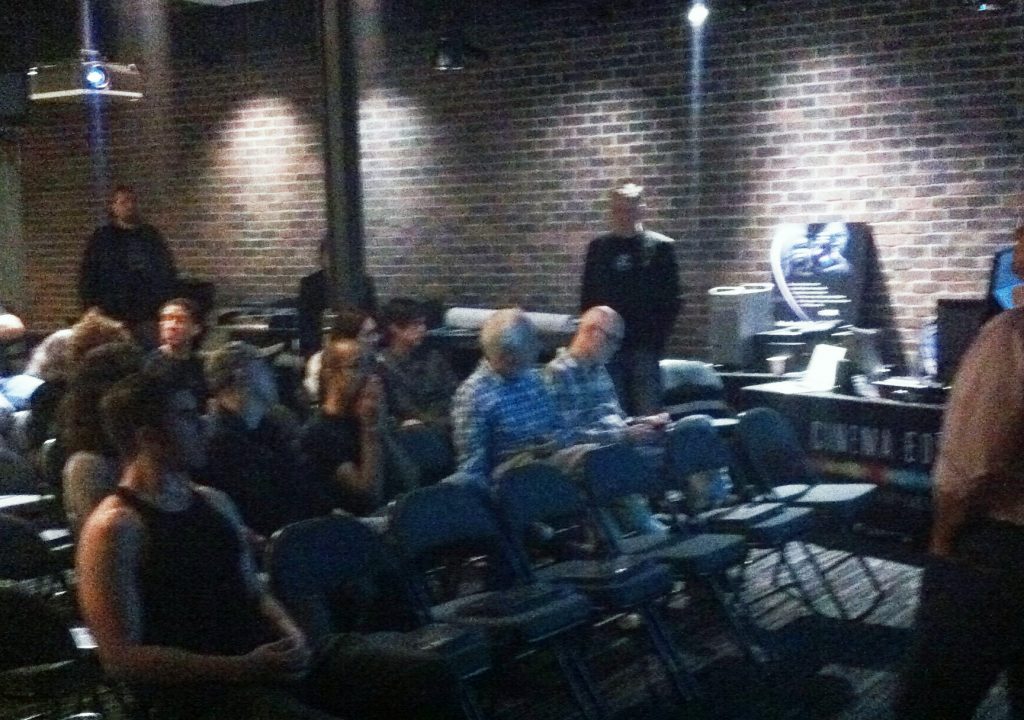The invite to the October 1st and October 3rd SCRATCH User Group events in New York and Los Angeles, respectively, claim you can come to see how “SCRATCH v8 blows away the limitations of location and proximity.” After watching the presentation that took place at Canon USA in Hollywood, I can say they’ve certainly made their case.
The way people work has changed across the board and the folks at Assimilate know it. They'll be the first ones to tell you their tools are designed to allow people to do more than one thing, but as Steve Bannerman, VP of Marketing at Assimilate, told the group, the software is also intended to help professionals serve their customers’ needs no matter where either of them happen to be based or located.
“We want to be able to remove the barrier of proximity and location,” he says. “If you're in LA, and you have four customers, how many can you visit in a day? We want to give you the ability to accommodate multiple customers and clients regardless of where you actually are. SCRATCH 8 is about removing that barrier.”
Lovera certainly didn’t skip over those details, but the essential part of the presentation was showing us how the software worked when utilized by multiple users in multiple locations and showcasing how it can and does work in a production environment. And I’m positive that’s what the attendees were interested in as well. It was a decent split between production and post-production professionals, so the info was obviously relevant to both sides.
First up, Lovera brought up colorist Oscar Martinez who was actually in Miami to show us how the two could work together on a single shot. The situation they presented was that as the compositor, Lovera needed his expensive colorist to get the shot looking correct, and the two showed how they could work in tandem while literally looking at the same thing. Whoever was not controlling the screen could provide text or visual notes, and of course they talked to each other the entire time as well. The notes Lovera provided were the same type he’d have been giving if they were together in a coloring session, but the two were 3,000 miles apart.
Later on Lucas Wilson, U.S. West Coast & VP of Business Development for Assimilate, brought his Surface Pro up to the front with some footage from the New York subway. The situation he presented was that they had just shot this on set, but it wasn’t looking right. He wanted to send this to Lovera to see if he could clean it up so the director on set would be able to make a decision regarding whether or not they needed to re-shoot or could move on.
“I've seen people on set load stuff up and then walk over to the director and go 'what do you think'”, Wilson says. “It keeps you from interrupting the flow of the set and having to go back to the DIT cart or to some other location when you need to make a decision.”
What was important was that during the demo the guys were working off their cell phone networks rather than the high speed Internet that I’m sure Canon could have provided. If you’re going to try to show people how a piece of technology can work on set, then you need to replicate what you’re going to be working with on set, don’t you?
Using that setup, everything seemed to come up just fine. I didn’t see any sort of lag with Martinez, but there was a little lag when Lovera was waiting for the scene to catch up to the position Wilson had taken it. The proxy still told Lovera where Wilson wanted him to look and the lag wasn’t more than a few seconds, so it certainly wasn’t critical or holding up either side in a significant way.
Working past and through the limitations of bandwith is one of the main things that separates it from the competition. SCRATCH can support an unlimited number of participants in a session so the only limitation is your bandwidth. Seeing them run the session off their phone signals proved those bandwidth requirements per user were fairly minimal, so a single session with multiple users wouldn't be a technical nightmare.
An interesting question that came up during the Q&A was whether or not the settings applied to the footage sent from the remote location would be able to be utilized once the technician got ahold of the actual footage. Wilson admitted it wasn’t a seamless process, but Lovera assured the audience it was simply a matter of copying and pasting those settings. Just something to keep in mind if you’re going to be working like this.
More encouraging is that the folks at Assimilate are looking and moving toward the future with their technology and how it's utilized. As Bannerman said at the beginning, they want to “change the paradigm”, and seeing companies take an active role in that is something you have to like. Remember when Apple did that? It sure seems like they don’t, so it’s great to see people and companies who see where we’re going and are working to get us there.
Whether you’ve got a production workflow that suits you or not, Assimilate has shown off one that DOES work. And going into a production with an idea of how things are going to progress is better than winging it, isn’t it?

